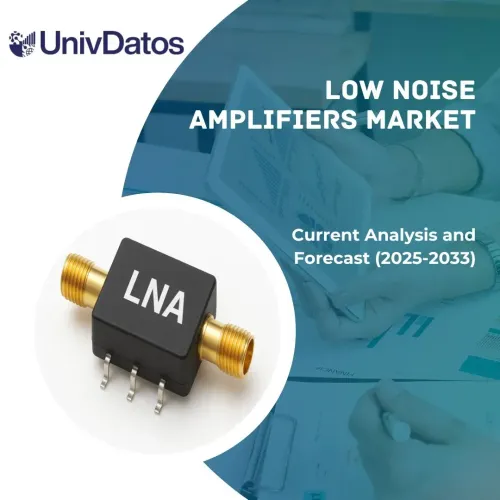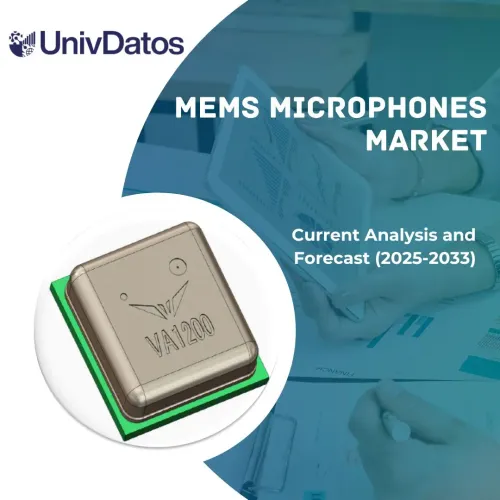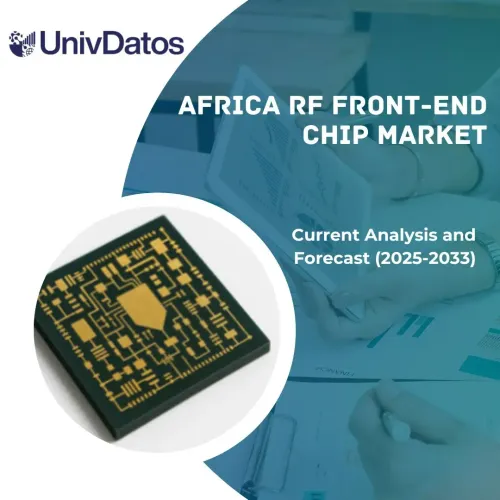- Trang chủ
- Về chúng tôi
- Ngành
- Dịch vụ
- Đọc
- Liên hệ với chúng tôi
Thị trường OLED-on-Silicon (OLEDoS): Phân tích hiện tại và Dự báo (2024-2032)
Chú trọng vào Loại Sản phẩm (Màn hình Gần mắt và Màn hình Ngẩng đầu); Ứng dụng (Người tiêu dùng, Hàng không & Quốc phòng, Thương mại & Công nghiệp và Các loại khác); Kích thước Màn hình (dưới 1 Inch và trên 1 Inch); Khu vực/Quốc gia.
Quy Mô và Dự Báo Thị Trường OLED-on-Silicon
Thị trường OLED-on-Silicon được định giá 434,2 triệu USD vào năm 2023 và dự kiến sẽ tăng trưởng với tốc độ CAGR mạnh mẽ khoảng 31,4% trong giai đoạn dự báo (2024-2032) do nhu cầu ngày càng tăng đối với các microdisplay độ phân giải cao, tiên tiến trong công nghệ AR/VR, thiết bị đeo và các sản phẩm điện tử nhỏ gọn khác.
Phân Tích Thị Trường OLED-on-Silicon
Thị trường OLED-on-Silicon (OLEDoS) bao gồm một phân khúc chuyên biệt của ngành công nghiệp màn hình, tập trung vào việc tích hợp công nghệ OLED với chất nền silicon để tạo ra các màn hình nhỏ gọn, độ phân giải cao. Thị trường này được thúc đẩy bởi nhu cầu ngày càng tăng trong các lĩnh vực như điện tử tiêu dùng, đặc biệt là cho các ứng dụng trong thiết bị đeo, thực tế ảo (VR) và thực tế tăng cường (AR). Các ứng dụng này được hưởng lợi rất nhiều từ chất lượng hình ảnh vượt trội, độ tương phản và hiệu quả năng lượng do công nghệ OLED mang lại. Một động lực quan trọng khác là sự tiến bộ không ngừng trong công nghệ microdisplay, rất quan trọng đối với các ứng dụng gần mắt. Khi các công nghệ này phát triển, chúng ngày càng được áp dụng cho mục đích quân sự, y tế và ô tô, từ đó mở rộng phạm vi tiếp cận của thị trường.
Thị trường OLED-on-Silicon được đặc trưng bởi các khoản đầu tư đáng kể và các động thái chiến lược đang định hình bối cảnh ngành. Một sự phát triển then chốt đã xảy ra khi eMagin Corporation (NYSE American: EMAN), một thực thể nổi tiếng của Hoa Kỳ nổi tiếng về sự đổi mới trong thiết kế và sản xuất microdisplay OLED Active-Matrix, đã được Samsung Display Co., Ltd., một công ty con của Samsung Electronics Co., Ltd., mua lại. Thương vụ mua lại này, được hoàn tất gần đây, đánh dấu sự mở rộng chiến lược của Samsung Display sang các sản phẩm hình ảnh độ phân giải cao, AR/VR và các sản phẩm hình ảnh gần mắt khác. Động thái này cho thấy tầm quan trọng ngày càng tăng của công nghệ OLED trong các ứng dụng tiên tiến và thể hiện sự hợp nhất về chuyên môn và nguồn lực giữa một nhà đổi mới hàng đầu trong microdisplay OLED và một trong những nhà sản xuất màn hình hàng đầu thế giới. Sự phát triển này không chỉ nâng cao khả năng của Samsung Display trong thị trường ngách này mà còn thay đổi đáng kể động lực cạnh tranh, có khả năng đẩy nhanh các tiến bộ công nghệ và đổi mới sản phẩm trong lĩnh vực này.
Trong tương lai, các khu vực phát triển nhanh nhất cho thị trường OLED-on-Silicon bao gồm Châu Á - Thái Bình Dương, đặc biệt là Nhật Bản và Trung Quốc, nơi có cơ sở sản xuất mạnh mẽ và ngày càng có nhiều sáng kiến của chính phủ nhằm hỗ trợ các tiến bộ công nghệ trong ngành công nghiệp màn hình. Ví dụ: nhiều chương trình do chính phủ tài trợ ở Nhật Bản đã thúc đẩy nghiên cứu và phát triển công nghệ OLED kể từ năm 2023, nhằm mục đích đảm bảo vị trí hàng đầu trên thị trường toàn cầu. Những nỗ lực này được bổ sung bởi các sáng kiến tương tự ở Châu Âu và Bắc Mỹ, nơi các chính phủ ngày càng nhận ra tầm quan trọng chiến lược của công nghệ màn hình tiên tiến trong việc duy trì lợi thế cạnh tranh trên thị trường công nghệ toàn cầu.
![]()
Xu Hướng Thị Trường OLED-on-Silicon
Phần này thảo luận về các xu hướng thị trường chính đang ảnh hưởng đến các phân khúc khác nhau của OLED-on-Silicon như được xác định bởi nhóm các chuyên gia nghiên cứu của chúng tôi.
Các Chính Sách Chính Phủ Hỗ Trợ Ngành Công Nghiệp Thị Trường OLED-on-Silicon
Nhật Bản
Chính sách: Chính phủ Nhật Bản đã nhắm mục tiêu vào các ngành công nghiệp điện tử và bán dẫn để tăng trưởng, sử dụng các chiến lược bao gồm tài trợ cho đổi mới công nghệ, bảo vệ quyền sở hữu trí tuệ và hỗ trợ hợp tác giữa trường đại học và ngành công nghiệp.
Tác động: Sự hỗ trợ này đã giúp duy trì lợi thế cạnh tranh của Nhật Bản trong các công nghệ khác nhau, bao gồm cả OLED, nơi các công ty như Sony và Japan Display Inc. tiếp tục đổi mới.
Liên Minh Châu Âu
Chính sách: Chương trình Horizon 2020 của EU, được kế thừa bởi Horizon Europe, cung cấp nguồn tài trợ đáng kể cho nghiên cứu và đổi mới trong các công nghệ mới, bao gồm điện tử và khoa học vật liệu.
Tác động: Chính sách này đã thúc đẩy nhiều dự án liên quan đến OLED, nâng cao năng lực của khu vực trong các công nghệ hiển thị tiên tiến.
Hoa Kỳ
Chính sách: Hoa Kỳ cung cấp các ưu đãi thuế khác nhau của liên bang và tiểu bang cho nghiên cứu và phát triển, nhằm thúc đẩy đổi mới công nghệ trên nhiều lĩnh vực, bao gồm điện tử và màn hình. Ngoài ra, Đạo luật Bảo vệ Sở hữu Trí tuệ Hoa Kỳ nhằm bảo vệ các công nghệ được phát triển trong biên giới của mình.
Tác động: Các chính sách này giúp các công ty như eMagin và Apple đầu tư và phát triển các công nghệ OLED mới, góp phần vào sự tăng trưởng của lĩnh vực công nghệ cao trong nước.
Trung Quốc
Chính sách: Kế hoạch chiến lược "Sản xuất tại Trung Quốc 2025" của Trung Quốc đặc biệt nhắm mục tiêu vào các ngành công nghiệp bán dẫn và màn hình để nâng cấp và mở rộng, cung cấp các ưu đãi về thuế, tài trợ trực tiếp và hỗ trợ cơ sở hạ tầng.
Tác động: Sự hỗ trợ toàn diện này đã nhanh chóng biến Trung Quốc thành một người chơi quan trọng trên thị trường OLED toàn cầu, với các công ty như BOE Technology đang tiến bộ nhanh chóng trong sản xuất OLED.
Các chính sách này phản ánh cam kết thúc đẩy các ngành công nghiệp công nghệ cao, điều này rất quan trọng đối với sự tiến bộ và thương mại hóa công nghệ OLED-on-Silicon. Mỗi chương trình không chỉ hỗ trợ ngành công nghiệp địa phương mà còn đóng góp vào hệ sinh thái OLED toàn cầu bằng cách thúc đẩy cạnh tranh và đổi mới.
APAC Dự Kiến Sẽ Tăng Trưởng Với CAGR Đáng Kể Trong Giai Đoạn Dự Báo
Khu vực Châu Á - Thái Bình Dương (APAC) là một thị trường then chốt cho ngành công nghiệp OLED-on-Silicon (OLEDoS), được đánh dấu bằng sự tăng trưởng nhanh chóng và những tiến bộ công nghệ đáng kể. Khu vực này là nơi có một số trung tâm sản xuất công nghệ hàng đầu, như Hàn Quốc, Nhật Bản, Trung Quốc và Đài Loan, những nơi đang đi đầu trong nghiên cứu và sản xuất OLED. Mật độ cao của các nhà sản xuất điện tử tiêu dùng ở các quốc gia này thúc đẩy nhu cầu đáng kể đối với microdisplay OLED-on-Silicon, đặc biệt là trong các ứng dụng như điện thoại thông minh, thiết bị đeo và hệ thống thực tế ảo. Về mặt kinh tế, APAC được hưởng lợi từ sự hỗ trợ mạnh mẽ của chính phủ đối với các lĩnh vực công nghệ, đầu tư mạnh mẽ vào R&D và các chính sách ưu tiên đổi mới công nghệ.
Các yếu tố này cùng nhau thúc đẩy một môi trường thuận lợi cho sự phát triển của các công nghệ tiên tiến bao gồm OLED-on-Silicon. Nền kinh tế phát triển nhanh chóng của khu vực, dân số trung lưu ngày càng tăng và thu nhập khả dụng ngày càng tăng cũng góp phần vào sự gia tăng nhu cầu đối với các sản phẩm tiêu dùng công nghệ cao, thúc đẩy thị trường tiến lên phía trước. Hơn nữa, khu vực APAC đang chứng kiến sự gia tăng trong hợp tác giữa giới học thuật và ngành công nghiệp, nhằm mục đích vượt qua các ranh giới của công nghệ OLED. Các sáng kiến như "Sản xuất tại Trung Quốc 2025" của Trung Quốc, sự tập trung chiến lược của Nhật Bản vào robot và công nghệ cảm biến, và các khoản đầu tư của Hàn Quốc vào công nghệ hiển thị nhấn mạnh cam kết của khu vực trong việc đảm bảo vị trí dẫn đầu trong lĩnh vực công nghệ cao. Điều này làm cho APAC không chỉ là một thị trường lớn cho các sản phẩm OLED-on-Silicon mà còn là một trung tâm đổi mới và phát triển trong lĩnh vực này.
![]()
Tổng Quan Về Ngành Công Nghiệp Thị Trường OLED-on-Silicon
Thị trường OLED-on-Silicon có tính cạnh tranh và phân mảnh, với sự hiện diện của một số người chơi thị trường toàn cầu và quốc tế. Những người chơi chính đang áp dụng các chiến lược tăng trưởng khác nhau để tăng cường sự hiện diện trên thị trường của họ, chẳng hạn như quan hệ đối tác, thỏa thuận, hợp tác, ra mắt sản phẩm mới, mở rộng địa lý và sáp nhập và mua lại. Một số người chơi lớn hoạt động trên thị trường là BOE Technology Group Co. Ltd., Sony Semiconductor Solutions Corporation, LG Display, eMagin (Samsung Display), Seiko Epson Corporation, Kopin Corporation, MICROOLED Technologies, Lakeside Optoelectronics Technology (Jiangsu) Co., Ltd., SeeYA Technology Corporation và INT Tech.
Tin Tức Thị Trường OLED-on-Silicon
Tháng 10 năm 2023 - eMagin Corporation (NYSE American: EMAN) ("eMagin" hoặc "Công ty"), một công ty hàng đầu của Hoa Kỳ trong lĩnh vực phát triển, thiết kế và sản xuất microdisplay OLED Active-Matrix cho các sản phẩm hình ảnh độ phân giải cao, AR/VR và các sản phẩm hình ảnh gần mắt khác, đã công bố hoàn tất việc mua lại bởi Samsung Display Co., Ltd. ("Samsung Display"), một công ty con của Samsung Electronics Co., Ltd. và là nhà sản xuất và phân phối các sản phẩm hiển thị.
Phạm Vi Báo Cáo Thị Trường OLED-on-Silicon
![]()
Lý do nên mua báo cáo này:
- Nghiên cứu bao gồm phân tích quy mô thị trường và dự báo được xác thực bởi các chuyên gia ngành hàng đầu đã được xác thực.
- Báo cáo trình bày đánh giá nhanh về hiệu suất tổng thể của ngành trong nháy mắt.
- Báo cáo bao gồm phân tích chuyên sâu về các đối thủ trong ngành nổi bật với trọng tâm chính vào tài chính kinh doanh chính, danh mục sản phẩm, chiến lược mở rộng và các phát triển gần đây.
- Kiểm tra chi tiết các động lực, hạn chế, xu hướng chính và cơ hội hiện có trong ngành.
- Nghiên cứu bao gồm toàn diện thị trường trên các phân khúc khác nhau.
- Phân tích cấp khu vực chuyên sâu về ngành.
Tùy Chọn Tùy Chỉnh:
OLED-on-Silicon toàn cầu có thể được tùy chỉnh thêm theo yêu cầu hoặc bất kỳ phân khúc thị trường nào khác. Bên cạnh đó, UMI hiểu rằng bạn có thể có nhu cầu kinh doanh riêng, vì vậy hãy liên hệ với chúng tôi để nhận được báo cáo hoàn toàn phù hợp với yêu cầu của bạn.
Mục lục
Phương pháp luận nghiên cứu cho Phân tích Thị trường OLED-trên-Silicon (2024-2032)
Phân tích thị trường lịch sử, ước tính thị trường hiện tại và dự báo thị trường tương lai của OLED-trên-Silicon toàn cầu là ba bước chính được thực hiện để tạo ra và khám phá việc áp dụng OLED-trên-Silicon ở các khu vực lớn trên toàn cầu. Nghiên cứu thứ cấp toàn diện đã được tiến hành để thu thập các số liệu thị trường lịch sử và ước tính quy mô thị trường hiện tại. Thứ hai, nhiều phát hiện và giả định đã được xem xét để xác thực những thông tin chi tiết này. Hơn nữa, các cuộc phỏng vấn sơ cấp toàn diện cũng đã được thực hiện với các chuyên gia trong ngành trên toàn chuỗi giá trị của OLED-trên-Silicon toàn cầu. Sau khi giả định và xác thực số liệu thị trường thông qua các cuộc phỏng vấn sơ cấp, chúng tôi đã sử dụng phương pháp tiếp cận từ trên xuống/từ dưới lên để dự báo quy mô thị trường hoàn chỉnh. Sau đó, các phương pháp phân tích thị trường và tam giác dữ liệu đã được áp dụng để ước tính và phân tích quy mô thị trường của các phân khúc và phân đoạn phụ của ngành. Phương pháp luận chi tiết được giải thích dưới đây:
Phân tích Quy mô Thị trường Lịch sử
Bước 1: Nghiên cứu Chuyên sâu về các Nguồn Thứ cấp:
Một nghiên cứu thứ cấp chi tiết đã được thực hiện để thu thập quy mô thị trường lịch sử của OLED-trên-Silicon thông qua các nguồn nội bộ của công ty như báo cáo thường niên & báo cáo tài chính, các bài thuyết trình hiệu suất, thông cáo báo chí, v.v., và các nguồn bên ngoài bao gồm các tạp chí, tin tức & bài viết, ấn phẩm của chính phủ, ấn phẩm của đối thủ cạnh tranh, báo cáo ngành, cơ sở dữ liệu của bên thứ ba và các ấn phẩm đáng tin cậy khác.
Bước 2: Phân khúc Thị trường:
Sau khi thu thập quy mô thị trường lịch sử của OLED-trên-Silicon, chúng tôi đã tiến hành phân tích thứ cấp chi tiết để thu thập thông tin chi tiết về thị trường lịch sử và chia sẻ cho các phân khúc và phân đoạn phụ khác nhau cho các khu vực lớn. Các phân khúc chính được bao gồm trong báo cáo như Loại Sản phẩm, Ứng dụng và Kích thước Màn hình. Phân tích sâu hơn ở cấp quốc gia đã được tiến hành để đánh giá việc áp dụng chung các mô hình thử nghiệm trong khu vực đó.
Bước 3: Phân tích Yếu tố:
Sau khi có được quy mô thị trường lịch sử của các phân khúc và phân đoạn phụ khác nhau, chúng tôi đã tiến hành phân tích yếu tố chi tiết để ước tính quy mô thị trường hiện tại của OLED-trên-Silicon. Hơn nữa, chúng tôi đã tiến hành phân tích yếu tố bằng cách sử dụng các biến phụ thuộc và độc lập như Loại Sản phẩm, Ứng dụng và Kích thước Màn hình của Thị trường OLED-trên-Silicon. Một phân tích kỹ lưỡng đã được thực hiện về các kịch bản cung và cầu xem xét các quan hệ đối tác hàng đầu, sáp nhập và mua lại, mở rộng kinh doanh và ra mắt sản phẩm trong lĩnh vực OLED-trên-Silicon trên toàn cầu.
Ước tính & Dự báo Quy mô Thị trường Hiện tại
Xác định Quy mô Thị trường Hiện tại: Dựa trên những thông tin chi tiết có thể hành động từ 3 bước trên, chúng tôi đã đưa ra quy mô thị trường hiện tại, những người chơi chính trong OLED-trên-Silicon toàn cầu và thị phần của các phân khúc. Tất cả các phần trăm cổ phần, phân chia và phân tích thị trường cần thiết đã được xác định bằng cách sử dụng phương pháp thứ cấp đã đề cập ở trên và được xác minh thông qua các cuộc phỏng vấn sơ cấp.
Ước tính & Dự báo: Để ước tính và dự báo thị trường, trọng số đã được gán cho các yếu tố khác nhau bao gồm động lực & xu hướng, hạn chế và cơ hội có sẵn cho các bên liên quan. Sau khi phân tích các yếu tố này, các kỹ thuật dự báo có liên quan, tức là phương pháp tiếp cận từ trên xuống/từ dưới lên đã được áp dụng để đưa ra dự báo thị trường cho năm 2032 cho các phân khúc và phân đoạn phụ khác nhau trên các thị trường lớn trên toàn cầu. Phương pháp luận nghiên cứu được áp dụng để ước tính quy mô thị trường bao gồm:
Quy mô thị trường của ngành, về doanh thu (USD) và tỷ lệ chấp nhận OLED-trên-Silicon trên các thị trường lớn trong nước
Tất cả các phần trăm cổ phần, phân chia và phân tích các phân khúc và phân đoạn phụ của thị trường
Những người chơi chính trong OLED-trên-Silicon toàn cầu về các sản phẩm được cung cấp. Ngoài ra, các chiến lược tăng trưởng được những người chơi này áp dụng để cạnh tranh trong thị trường đang phát triển nhanh chóng
Xác thực Quy mô và Thị phần Thị trường
Nghiên cứu Sơ cấp: Các cuộc phỏng vấn chuyên sâu đã được thực hiện với các Nhà lãnh đạo Ý kiến Chủ chốt (KOL) bao gồm các Giám đốc Điều hành Cấp cao (CXO/VP, Trưởng phòng Kinh doanh, Trưởng phòng Tiếp thị, Trưởng phòng Vận hành, Trưởng khu vực, Trưởng quốc gia, v.v.) trên khắp các khu vực lớn. Sau đó, các phát hiện nghiên cứu sơ cấp được tóm tắt và phân tích thống kê đã được thực hiện để chứng minh giả thuyết đã nêu. Thông tin đầu vào từ nghiên cứu sơ cấp được hợp nhất với các phát hiện thứ cấp, do đó biến thông tin thành thông tin chi tiết có thể hành động.
Phân chia Người tham gia Sơ cấp ở các Khu vực Khác nhau
![]()
Kỹ thuật Thị trường
Kỹ thuật tam giác dữ liệu đã được sử dụng để hoàn thành việc ước tính thị trường tổng thể và đưa ra các số liệu thống kê chính xác cho từng phân khúc và phân đoạn phụ của Thị trường OLED-trên-Silicon toàn cầu. Dữ liệu được chia thành nhiều phân khúc & phân đoạn phụ sau khi nghiên cứu các thông số và xu hướng khác nhau trong các lĩnh vực Loại Sản phẩm, Ứng dụng và Kích thước Màn hình trong Thị trường OLED-trên-Silicon toàn cầu.
Mục tiêu chính của Nghiên cứu OLED-trên-Silicon Toàn cầu
Các xu hướng thị trường hiện tại & tương lai của OLED-trên-Silicon toàn cầu đã được xác định chính xác trong nghiên cứu. Các nhà đầu tư có thể thu được những hiểu biết chiến lược để dựa vào đó để đưa ra quyết định đầu tư dựa trên phân tích định tính và định lượng được thực hiện trong nghiên cứu. Các xu hướng thị trường hiện tại và tương lai xác định mức độ hấp dẫn tổng thể của thị trường ở cấp khu vực, cung cấp một nền tảng cho người tham gia công nghiệp khai thác thị trường chưa được khai thác để hưởng lợi từ lợi thế của người đi đầu. Các mục tiêu định lượng khác của các nghiên cứu bao gồm:
- Phân tích quy mô thị trường hiện tại và dự báo của OLED-trên-Silicon về giá trị (USD). Ngoài ra, hãy phân tích quy mô thị trường hiện tại và dự báo của các phân khúc và phân đoạn phụ khác nhau
- Các phân khúc trong nghiên cứu bao gồm các lĩnh vực Loại Sản phẩm, Ứng dụng và Kích thước Màn hình
- Xác định và phân tích khuôn khổ pháp lý cho ngành OLED-trên-Silicon
- Phân tích chuỗi giá trị liên quan đến sự hiện diện của các trung gian khác nhau, cùng với việc phân tích hành vi của khách hàng và đối thủ cạnh tranh trong ngành
- Phân tích quy mô thị trường hiện tại và dự báo của OLED-trên-Silicon cho khu vực lớn
- Các quốc gia lớn của các khu vực được nghiên cứu trong báo cáo bao gồm Châu Á Thái Bình Dương, Châu Âu, Bắc Mỹ và Phần còn lại của Thế giới
- Hồ sơ công ty của OLED-trên-Silicon và các chiến lược tăng trưởng được những người chơi trên thị trường áp dụng để duy trì trong thị trường đang phát triển nhanh chóng
- Phân tích sâu ở cấp khu vực của ngành
Câu hỏi thường gặp Câu hỏi thường gặp
H1: Quy mô thị trường hiện tại và tiềm năng tăng trưởng của thị trường OLED-on-Silicon là gì?
Câu hỏi 2: Động lực thúc đẩy sự tăng trưởng của thị trường OLED-on-Silicon là gì?
Q3: Phân khúc nào chiếm thị phần lớn nhất trong thị trường OLED-on-Silicon theo Loại Sản phẩm?
Q4: Các công nghệ và xu hướng mới nổi trong thị trường OLED-on-Silicon là gì?
Q5: Khu vực nào sẽ chiếm ưu thế trên thị trường OLED-on-Silicon?
Liên quan Báo cáo
Khách hàng đã mua mặt hàng này cũng đã mua








